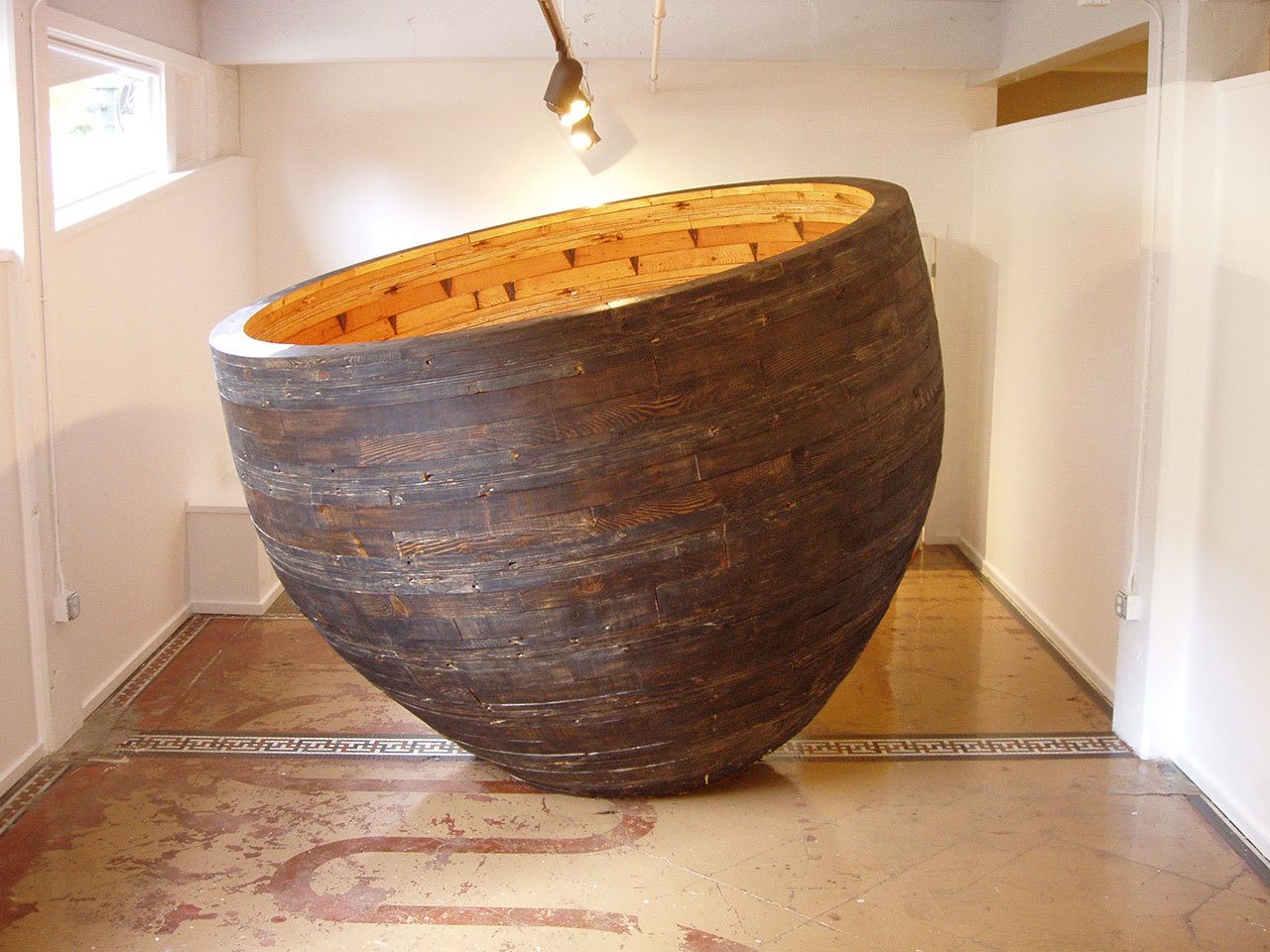In homage to the iconic Pacific Northwest forests, the San Juan Island Art Museum has chosen that ancient landscape for 2017 exhibits. The first show, “Forest Dialogues” includes collections from Washington artists Morse Clary, Suze Woolf and Aaron Haba.
“The basic story that trees have to tell is that they are trustworthy,” said Clary, explaining that trees serve many needs — furniture, paper products, crafts, and landscaping, even as material for artists.
“Forest Dialogues,” which opens March 4 at the San Juan Island Art Museum, creates a dialogue between varying perspectives on these iconic forests, as well as differing artistic technique. Museum hours are Friday through Monday, 11 a.m. to 5 p.m. and entry is free every third Monday of the month. Tickets for adults are $10, children under 18, and members of the museum, are free.
From the ceiling of the museum’s Atrium, Aaron Haba’s “A Reflection of Vessel,” a massive wooden bowl weighing 2,500 pounds, will be suspended with what Haba calls a new twist to the installation.
“Suspended above the bowl will be a 10-foot diameter mirror to allow the viewer to see the interior while looking toward the sky,” said Haba.
Haba spent a month in Pampelonne France, during his artist-in-residence program, working in a studio, he said, that was a 14th century converted barn. He explained that his interest in sculpture was a direct response to his work in theater, design and carpentry. Haba was led down the artistic path, because of the “desire to try to make sense of the world we live in.”
Inside the museum, Woolf’s “Chard Totems,” a collection of watercolors of scorched trees, and Clary’s “Celebrations” collection of wooden book sculptures each embedded with a different tale continue the “Forest Dialogues” of the upcoming show. Music plays in the background of this conversation as, according to Clary, it is often referenced in his sculptures.
“There is an order and basic similarity between music and the visual arts, it is possible to tap one’s foot to a visual progression or hum as one takes in a landscape,” Clary said.
Woolf was taking in the landscape when she noticed hundreds of thousands of trees killed by insects. She realized they would likely all burn, and the following summer, according to Woolf, they did. Woolf became more aware of global warming and the forest fires that result from those increasing temperatures. She noted that insect infestations also become more frequent due to global warming since, as winters also begin to warm, insects no longer freeze. Woolf began painting the trees charred bodies.
“I paint them because observing climate change on my home turf, what I have seen in my adult lifetime, makes me anxious. Painting these trees is one way I can speak to my concerns and get other people to see them,” explained Woolf. A burn site was very close to her during her artist-in-residence program in the North Cascades, said Woolf.
“It became my own special sculpture garden and I’ve gone back to visit those same skeletons,” she said explaining that despite their dark subject matter the trees are quite beautiful. People have told her the watercolors have helped them come to terms with fires in their favorite places. While her watercolors are not as large as Haba’s wooden vessel, some as large as 52 inches by 20 inches, making an impressive impact on their audience.
The tactile impact of books impressed Clary, leading him to create his sculptures. While he views the technological advances of books in general, as enhancements, and positive, nothing is quite like holding a physical book in hand.
“Holding symbols or pixels is less personal than feeling the weight and girth of a volume,” Clary said.
Interestingly, all three artists initially experimented with printmaking as they first dipped their toes into the art world. Woolf became enchanted with watercolor, Haba was drawn to sculpture, and for Clary, wood has become his favorite medium.
As many artists do, all three have something to communicate to the world around them.
“I hope (the audience) enjoy the fascination I have and seeing (the exhibit) causes them to think about what’s going on around them,” Woolf said.
“Be creative,” Haba advised.
Clary hopes the viewers enjoy the language of his books. “Relax and review my books’ frames of references for anything that is common to past experiences of their own,” he said.
On May 26, the second show in the series, “Legends from the Human Spirit: Traditional and Contemporary Coastal Peoples,” a collection by First Nation artists, will open. The third show opens Sept. 15, and features “Old Growth” by Gail Grinnell and “From Rocky Outcroppings,” a compilation by Jean Behnke and Michael Peterson. For more information visit, www. sjima.org.




